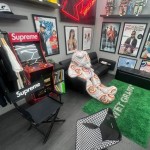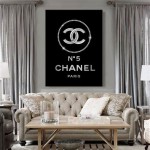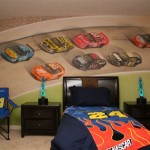Formal Dining Room Wall Decor Ideas: Elevating Your Space
The formal dining room serves as a focal point for many homes, a space dedicated to elegant gatherings, special occasions, and cherished memories. The ambiance of this room significantly impacts the overall dining experience. Wall decor plays a crucial role in shaping this ambiance, acting as a canvas to express personal style and enhance the room's aesthetic. Selecting the right wall decor requires careful consideration of factors such as the room's existing architecture, intended use, and the overall design scheme. The choices range from classic artwork to contemporary installations, offering a wide spectrum of possibilities to transform the dining space.
Consider the Architecture and Scale
Before embarking on the selection of wall decor, the architecture and scale of the dining room must be evaluated. Rooms with high ceilings and expansive wall spaces can accommodate large-scale artwork, such as oversized paintings or expansive tapestries. Conversely, smaller dining rooms with more intimate settings might benefit from a collection of smaller, carefully curated pieces. The existing architectural features, such as wainscoting, molding, or built-in cabinetry, should also guide the selection process. Wall decor should complement these features, avoiding overcrowding or clashing with them. The placement of windows and doors also influences the optimal placement of wall decor.
The size and shape of the dining table itself must also be considered. A long rectangular table, for instance, might call for a correspondingly long piece of artwork, such as a series of framed prints or a horizontally oriented painting. A round table, on the other hand, might be complemented by a central focal point, perhaps a large mirror or a striking piece of sculpture. By taking these factors into account, the selected wall decor integrates seamlessly into the space and contributes to a balanced and harmonious design.
Choosing Artwork: Paintings, Prints, and Photography
Artwork remains a cornerstone in formal dining room wall decor. Paintings offer a direct way to express the desired mood and style. Classic landscapes, still lifes, and portraits can lend a sense of timeless elegance, while abstract art can introduce a modern and sophisticated touch. The size, style, and color palette of the painting should harmonise with the room's overall design. Frame selection is also paramount. Ornate, gilded frames are suitable for traditional spaces, while clean, minimalist frames are better suited for contemporary settings.
Prints provide an accessible alternative to original paintings, allowing for the incorporation of a wide range of styles and subject matters. Collections of framed prints create visual interest and can be arranged in various configurations, from symmetrical grids to more dynamic, gallery-style displays. Photography, whether black and white or color, provides a contemporary edge. Consider selecting photographs with personal significance or those with a strong visual impact, such as landscape scenes or architectural studies. The frames and matting contribute to the overall presentation.
Mirrors: Enhancing Light and Space
Mirrors are effective tools in enhancing the ambiance of a dining room. They reflect light, making the space appear brighter and more spacious. A large mirror placed opposite a window can maximize natural light and create a sense of openness. Mirrors can also act as decorative elements, adding visual interest to the wall. A mirror with an ornate frame can introduce a touch of glamour, while a minimalist, geometric mirror contributes to a more contemporary feel. For added depth, consider a grouping of smaller mirrors to create a gallery wall effect.
Decorative Wall Panels and Sculptural Elements
Beyond traditional artwork, decorative wall panels and sculptural elements offer alternative decor options. Wall panels can introduce texture and visual interest, such as carved wooden panels, textured wallpaper, or mirrored panels. They can be used to create a focal point or to add depth to a plain wall. These panels, with their intrinsic design or texture, add a unique dimension to the room. When choosing wall panels, consider the overall style of the dining room. Wood panels suit traditional spaces, while metallic or geometric panels complement modern designs.
Sculptural elements, such as wall-mounted sculptures or three-dimensional installations, introduce a sense of drama and artistic expression. These pieces can range from abstract metal sculptures to intricate carvings, adding visual intrigue to the dining room. The size and style of the sculpture should be proportional to the wall space and the overall design scheme. Carefully consider the lighting around the sculpture to enhance its visual impact. Spotlights or track lighting can create dramatic shadows and highlight the artwork’s details.
Considering Color and Texture
Color and texture play critical roles in wall decor. The color palette of the wall decor should complement the existing color scheme of the dining room. Consider the room's wall color, furniture finishes, and other decorative elements. Accent colors can be used to add visual interest and to tie the decor together. For example, artwork with bold pops of color can visually connect the wall and table setting. Texture, either through the artwork itself or by incorporating textured materials, can add depth and visual complexity to the space.
Consider using textured wallpapers, fabric panels, or woven wall hangings. These materials add a tactile element and can soften the overall look of the room. The combination of color, texture, and visual elements creates a balanced and inviting atmosphere. The goal is a cohesive design that enhances the dining experience and reflects personal style.
Lighting and Wall Decor
Lighting plays a crucial role in enhancing the presentation of wall decor. Proper lighting can highlight artwork, create mood, and improve visibility. Consider the type of lighting, such as recessed lighting, track lighting, or wall sconces and how it will interact with the chosen wall decor. Spotlights or track lights directed toward the artwork can dramatically enhance its visual impact. Wall sconces can provide ambient lighting and complement the decor. Ensure lighting choices do not cast harsh shadows or wash out the artwork's colors.
Personalization: Adding a Personal Touch
The most successful formal dining rooms reflect the personality and preferences of the homeowner. Integrating personal touches into the wall decor is essential. Consider incorporating family photographs, travel mementos, or artwork created by loved ones. These personal touches create a sense of warmth, connection, and individuality. Ensure that these personal items integrate with the overall design scheme and that their placement aligns with the room's focal points and design balance. The resulting room should feel inviting and reflect the unique character of the home and its occupants.

10 Formal Dining Room Ideas From Top Designers
:max_bytes(150000):strip_icc()/art4-445991107c1841ccb4f3a266e6793183.jpg?strip=all)
46 Dining Room Wall Art Ideas For Elevated Entertaining

10 Formal Dining Room Ideas From Top Designers

20 Beautiful Transitional Style Dining Room Ideas Wall Decor Farmhouse Rooms

54 Simple Dining Room Wall Decor Ideas Displate Blog

100 Designer Dining Room Decorating Ideas

Before After Formal Dining Room Ideas Decorilla

85 Best Dining Room Ideas Designer

160 Awesome Formal Design Ideas For Your Dining Room Decor Traditional Elegant Paint

Before After Formal Dining Room Ideas Decorilla
Related Posts







